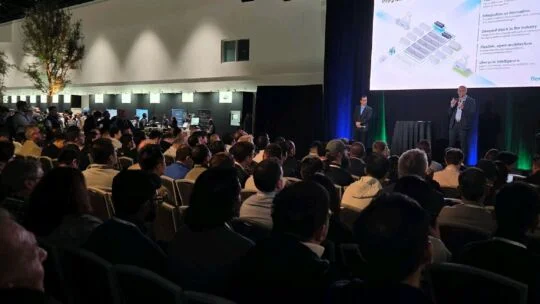
在我们上一期建立可持续商业博客系列中,我们讨论了收集数据的各种最佳实践。
一旦完成了数据收集的艰苦工作,企业就渴望将其投入使用,评估组织可持续性绩效并向利益相关者报告这一进展。
但在此之前,需要确保来自组织各个角落的数据是可靠且值得信赖的。在本文中,我们将分享数据验证方法。

确保数据完整性
任何对组织可持续发展绩效的评估都取决于数据的准确性。鉴于对可持续发展报告的审查日益严格,建立对这些数据的信任至关重要,因为任何可疑的信息都可能引发不必要的审查和声誉损失。此外,种种迹象表明,不久的将来,某些政府将要求上市公司披露其可持续发展指标。
各利益相关方群体都对可持续性数据的可靠性有着迫切的需求。客户需要它来验证其供应链,投资者希望确保其投资组合中不存在“漂绿”行为,报告机构也要求提供越来越多的可靠性。为了满足这一日益增长的需求,现在正是加倍努力加强我们系统和机制以验证可持续性数据准确性的时候。为您的组织的可持续性实践提供可靠性的方法不止一种。
内部审计
在 Flex,我们的数据验证机制涉及多层,我们的第一道准确性检查是通过我们八年前制定的内部审查流程进行的。
我们为美洲、亚洲、欧洲(包括中东)三个区域各指派一名内部审核员。每当我们的工厂提交月度数据集时,这些审核员都会根据其数据源进行验证。例如,我们的部分可持续发展数据来自发票;每个工厂的用水量数据都来自其水费账单。我们的审核员会根据发票副本审核此项目的准确性。一旦出现问题,每位审核员都会与其指定工厂的同事密切合作,以解决问题,包括进行必要的调整。除了审查数据录入错误外,内部审核员还会发现不一致和违规行为。如果我们发现用电量出现非季节性激增,我们将进行调查并解释这一异常情况。
下一个准确度过滤器出现在每个季度末,届时我们会使用趋势线和图表仪表板分析数据。这些可视化功能可帮助我们发现并解释月度审计中未发现的任何违规行为。
下一个检查点是我们在发布年度可持续发展报告之前进行的年度审计。在最终筛选过程中,我们会以多种方式整理数据,确保即使经过细分,数据仍然准确。例如,我们要求各工厂将每月产生的废弃物量分类为填埋、可回收和危险废弃物。在年度审计期间,我们会通过审查年度可回收废弃物按材料(例如玻璃、纸板和铝)的细分情况进行交叉核对。我们期望过去12个月按材料划分的可回收废弃物总量与按体积划分的可回收废弃物总量保持一致。
我们的风险管理团队隶属于财务部门,他们也会通过风险评估的视角来分析我们的数据。这种审计的次数没有规律可循——这对我们来说是最佳实践,因为它可以提高敏捷性。
我们采用主动、持续的流程来跟踪关键绩效指标,这有助于我们在监控目标进度的同时发现异常情况。此外,这些持续的检查还能增强我们跟踪进度时对数据的信心。因此,我们避免了在截止日期前或收到首席财务官办公室的审计通知时需要解决意外的不一致问题。
审核我们的供应商
在我们确保供应商的商业行为符合我们的可持续发展目标时,我们还采用了一套流程对其进行审核。
我们要求供应商填写供应商评估问卷 (SAQ) 并满足 Flex 的要求,这是一项基于负责任商业联盟 (RBA) 行为准则所涵盖原则的社会和环境评估。我们的供应商评估流程的一部分包括审核供应商对问卷的回复,其中包括补充的内部风险评估。在这些步骤完成后,我们会确定是否需要进一步的实地审核;如果需要,我们会根据需要通过电子邮件、电话和现场访问的方式与供应商进行跟进。
第三方审计
与许多公司的做法一样,Flex 聘请了一家外部保证供应商,该供应商有资格验证我们可持续发展报告各个方面的准确性;事实上,有些数据无法轻易或迅速验证,例如参加我们社区计划的志愿者员工人数。
正如我们最新可持续发展报告的最后一页所示,审计师会提供一份保证印章,就像会计审计师签署已发布的财务业绩一样。我们的审计师会选择约 30 个工厂,采访运营负责人、健康和安全工作人员以及其他领域专家,以验证某些定性和定量数据。
获得保证的考虑因素:
- 虽然可持续性审计可以提供基本的保证,但它仍然缺乏统一的全球强制性标准。
- 某些排名和声明需要获得公认第三方的认证和验证。例如,RBA 为我们电子制造业的可持续性提供了一个广泛接受的审计框架。RBA 的一个关键项目是验证评估计划 (VAP),依靠预先批准的外部审计师来验证合规标准。
- 虽然目前任何司法管辖区都没有强制要求审计师签字,但请调查您所在行业和司法管辖区的标准做法。
- 如果您所在辖区和行业的审计实践难以管理,则应权衡数据的复杂性。Flex 尽可能共享详细数据;例如,我们会细分范围 1、2 和 3 的排放。数据越精细,出错的可能性就越大,必须加以管理——这时第三方验证就显得尤为重要。
组织有很多资源可以帮助他们起步。负责任商业联盟和国际标准化组织等组织可以提供帮助。建议从普华永道、安永、德勤等专门从事风险和财务审计的外部审计公司入手。与企业风险管理团队或负责财务外部报告的团队成员沟通也会有所帮助。从小处着手,逐步建立保证计划是关键。
最终,利益相关者会感激收集到的数据,而且数据越丰富越好。无论是内部审计还是外部审计,对于增强对可持续发展信息可靠性的信心都至关重要。
探索我们系列中的相关文章,建立可持续发展的业务。



